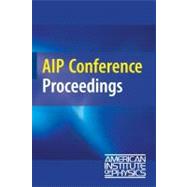
Note: Supplemental materials are not guaranteed with Rental or Used book purchases.
Purchase Benefits
What is included with this book?
| Preface | p. vii |
| Policies for Sustainable Energy | |
| Opportunities in the Building Sector: Managing Climate Change | p. 3 |
| Energy Efficiency in China: Glorious History, Uncertain Future | p. 15 |
| Stabilization Wedges and Climate Change | p. 28 |
| Science and Technology to Support a National Energy Strategy for the United States | p. 49 |
| Water Security: A Growing Crisis and the Link to Energy | p. 55 |
| Energy use in Buildings, Appliances and Industry | |
| Energy Savings by Treating Buildings as Systems | p. 67 |
| Physics of Energy Efficient Buildings | p. 88 |
| Progress towards Highly Efficient Windows for Zero-Energy Buildings | p. 112 |
| Appliances: Designs and Standards for Sustainability | p. 124 |
| Energy Efficient White LEDs for Sustainable Solid State Lighting | p. 141 |
| Heating, Ventiliating, and Air Conditioning: Recent Advances in Diagnostics and Controls to Improve Air-Handling System Performance | p. 149 |
| Technologies and Policies to Improve Energy Efficiency in Industry | p. 163 |
| Safe and Affordable Drinking Water for Developing Countries | p. 176 |
| Saving Energy and Improving Air Quality in Urban Heat Islands | p. 192 |
| Standby Energy Use in California Homes | p. 209 |
| Infrared Technology Trends and Implications to Home and Building Energy Use Efficiency | p. 217 |
| Energy Use by Automobiles | |
| The Race for 21st Century Auto Fuels | p. 235 |
| The Relationship between Vehicle Weight/Size and Safety | p. 251 |
| The Science of Photons to Fuel | p. 266 |
| Batteries for Vehicular Applications | p. 283 |
| Hydrogen Storage for Automotive Vehicles | p. 297 |
| Electricity from Renewable Energy | |
| Solar Energy Conversion | p. 309 |
| Organic Semiconductors for Low-cost Solar Cells | p. 322 |
| Concentrating Solar Power | p. 331 |
| The Status and Future of Wind Energy Technology | p. 340 |
| Future Roles for Nuclear Energy | p. 360 |
| Carbon Capture and Geologic Storage | p. 366 |
| Energy Storage for a Greener Grid | p. 376 |
| Appendices | |
| Energy and Environment Chronology | p. 395 |
| Energy Outlook, 1980-2030 | p. 403 |
| Energy Units | p. 421 |
| WWW Energy Sites | p. 425 |
| Author Bio Briefs | p. 427 |
| Sustainable Energy Participants | p. 435 |
| Author Index | p. 437 |
| Table of Contents provided by Ingram. All Rights Reserved. |
The New copy of this book will include any supplemental materials advertised. Please check the title of the book to determine if it should include any access cards, study guides, lab manuals, CDs, etc.
The Used, Rental and eBook copies of this book are not guaranteed to include any supplemental materials. Typically, only the book itself is included. This is true even if the title states it includes any access cards, study guides, lab manuals, CDs, etc.